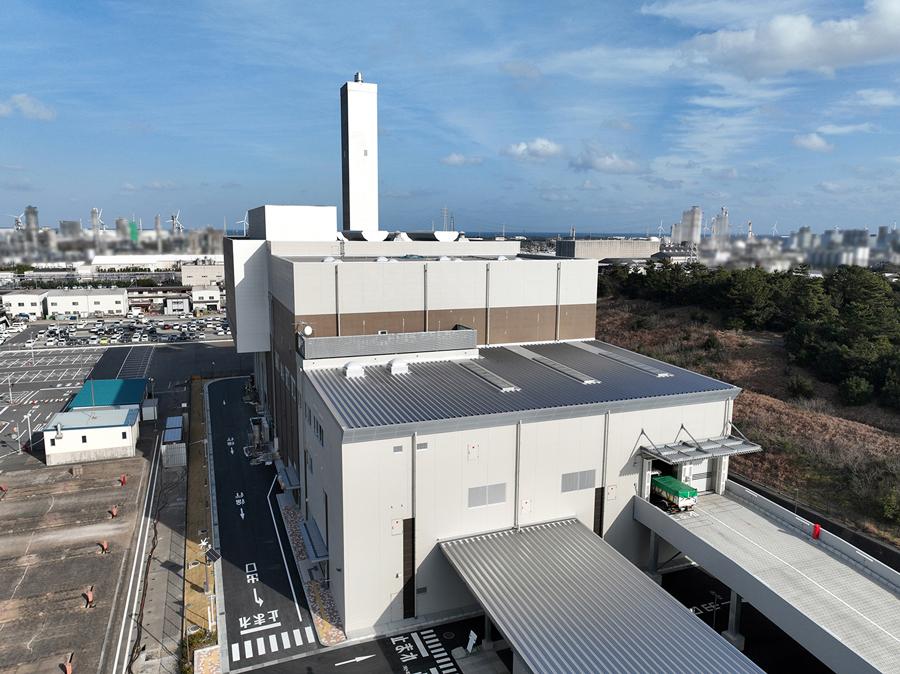Press Information
MHIEC Completes Construction of Kashima Joint Combustible Waste Clean Center in Kamisu City, Ibaraki Prefecture
-- Treatment Capacity of 230 Tonnes Per Day --
-- Treatment Capacity of 230 Tonnes Per Day --
・ New plant consolidates two superannuated existing plants, with operation launched April 1
・ Waste-to-Energy plant performs integrated incineration of combustible waste of Kashima and Kamisu cities

Kashima Joint Combustible Waste Clean Center
Tokyo, April 24, 2024 - Mitsubishi Heavy Industries Environmental & Chemical Engineering Co., Ltd. (MHIEC), a part of Mitsubishi Heavy Industries (MHI) Group, has completed construction of a waste-to-energy plant in Kamisu city in Ibaraki Prefecture. MHIEC received the order for the plant, named the Kashima Joint Combustible Waste Clean Center, in 2020 from the Kashima Regional Administration Association, which comprises the cities of Kashima and Kamisu. Full-scale operation got underway on April 1.
The new plant consolidates and replaces two superannuated combustible waste management facilities previously operated in Kashima and Kamisu. A waste-to-energy plant, it is equipped with two stoker type incinerators(Note), each having a waste treatment capacity of 115 tonnes per day (tpd), and a power generation system. The new facility enables integrated incineration of the two cities' combustible waste, as well as energy recovery.
MHIEC succeeded to MHI's environmental systems business in 2008, incorporating its accumulated technological development capabilities in environmental systems and its abundant expertise in the construction and operation of waste management facilities. This background gives MHIEC outstanding capacity to propose comprehensive solutions encompassing everything from plant construction to operation. Going forward, building on this solid track record the company will continue proactively offering not only proposals for new waste management facilities, but also solutions for efficiently recovering energy from waste, enhancing the energy efficiency of existing plants, improving incinerator performance through support for remote monitoring and autonomous operation applying AI and IoT, and lowering lifecycle costs. In these ways MHIEC will seek expanded orders both in Japan and overseas, and also contribute to realization of a carbon neutral society.
- A stoker incinerator is the most widely adopted type of furnace used in waste-to-energy plants. Waste is combusted as it moves along on a fire grate made of heat-resistant castings.
Overview of Kashima Joint Combustible Waste Clean Center
| Treatment capacity | 230 tonnes per day (115 tpd/ x 2 units) |
| Treatment method | Incineration (stoker type) |
| Power generation capacity | 4,880 kW |
About MHI Group
Mitsubishi Heavy Industries (MHI) Group is one of the world’s leading industrial groups, spanning energy, smart infrastructure, industrial machinery, aerospace and defense. MHI Group combines cutting-edge technology with deep experience to deliver innovative, integrated solutions that help to realize a carbon neutral world, improve the quality of life and ensure a safer world. For more information, please visit www.mhi.com or follow our insights and stories on spectra.mhi.com.





